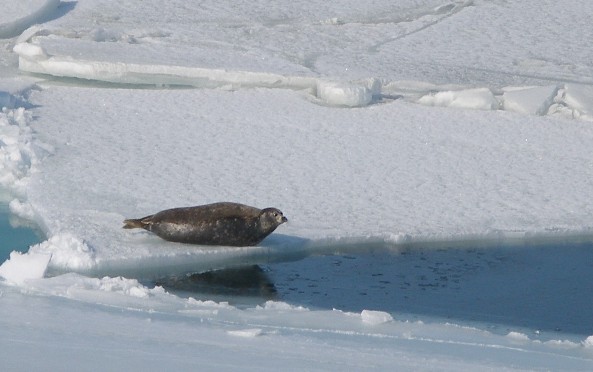Research Programme

The following are the principal research areas for the Darwin project:
- Seal numbers and habitatAn annual survey of seals breeding on the ice in the Northern will be carried out annually in order to determine the total pup production, and hence the number of breeding females in the Caspian seal population. This survey will be led by the international Caspian International Seal Survey (CISS) team. The results of the survey will be held on a data base by the Caspian Seal Conservation Network (CSCN), and where appropriate the results will be published in international scientific journals.
Simultaneously, the Darwin project will focus, through the CSCN scitnists in each country, on surveys of seal haul-out sites and seal numbers in all parts of the Caspian. The aim of this work is to identify all haul-out sites, describe them and document seal numbers at each. Thus an inventory of pan-Caspian seal habitat will be developed. Habitat degradation and current disuse by seals will also be recorded.
- Migration patternsSeal migration patterns will be studied by satellite telemetry. The first of such studies is projected for the autumn of 2007, when it is planned to attach a satellite tag to adult seals in the NE Caspian and subsequently record their breeding habitat selection as the ice forms and movements during the breeding season. Further projected studies will include tracking the movements of juveniles during the breeding season and the movements of seals after the annual spring moult.
- DietSeal diet will studied by collecting faecal samples at haul-out sites and analysing these samples for otoliths (earstones) and other prey remains. Faecal analysis is a standardised technique, widely accepted in the international scientific community, for studying seal diet.
Note: it is project policy that no seals will be killed in order to obtain stomach contents. This old method has been superseded by faecal sampling.
- Health statusSeal health status will be studied by carrying out live sampling of seals. This is achieved by catching seals in a net, tranquillising them, and taking blood samples, nasal, ocular, penile or anal swabs, skin and blubber biopsies. After sampling, seals are given an antibiotic injection and released unharmed. Blood samples will then be screened for antibodies to viral diseases, swabs may be screened for virus and bacterial presence, blubber will be analysed for organo-halogen contaminants, and skin will be subjected to genetic analysis.
Note: it is project policy that no seals will be killed for health screening. Much of the health screening will be carried out on seals caught for satellite tagging. Seals caught in nets by fishermen in Iran will also be sampled for health screening by the Darwin team before being released.
- Mortality diagnostic analysisWhere Caspian seals are found already dead by the team – either from fisheries by-catch in nets or found dead on the beach – post-mortem investigation and extensive tissue sampling for diagnostic analysis and population health screening will be carried out. Post-mortems will be conducted according to a standard protocol used by the Marine Mammal Stranding project, Institute of Zoology (London) in the UK. More extensive tissue sampling, and hence analysis, may obviously be carried out on dead animals, and these additional analyses will include virus isolation, virus identification by PCR and standard histological techniques for diagnosing death due to the distemper virus, as well as tissue sampling for metal contaminants and for parasite load.
- GeneticsCaspian seal genetics may be studied by analysis of tissue samples – skin or muscle tissue is commonly used. Genetic analysis can provide information about genetic diversity within the population, the existence of any genetically-distinct sub-populations (for example seals on Ogurchinsky Island) and resistance or vulnerability of specific genotypes to disease.
